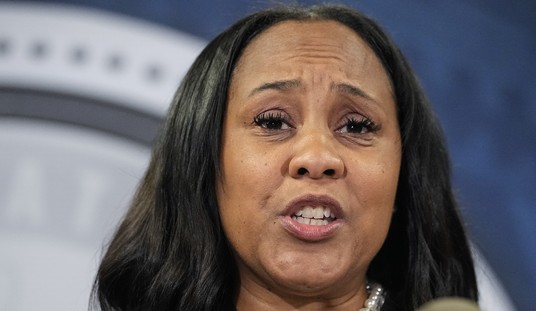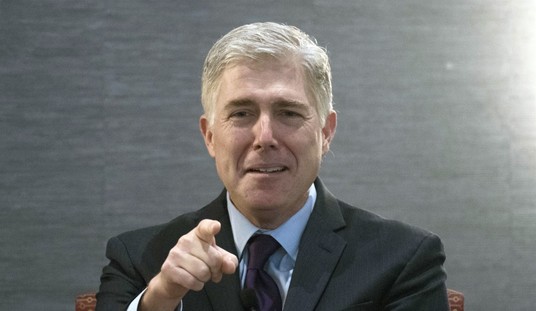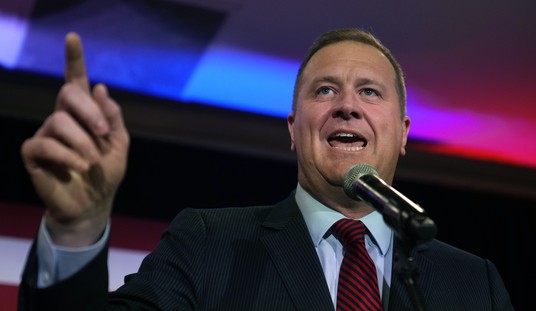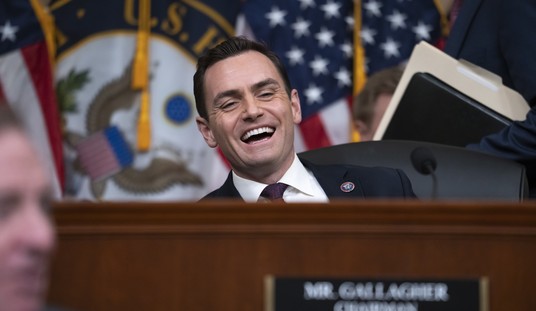Should Republicans trade tax hikes for spending cuts? Much of the debate over the current fiscal cliff standoff centers around discussions of “ratios”: Republicans will agree to X dollars of tax hikes, Democrats will agree to Y dollars of spending cuts, and so forth.
Much of this discussion is based on numbers that are misleading or worse, because Washington doesn’t calculate taxes and spending the same way. A tax hike will raise real, immediate costs on real taxpayers, whether or not it actually raises any more revenue. The targets of a tax hike are citizens, who do not have a choice whether to obey. By contrast, a “spending cut” may simply involve altering future projections of the rate of increase of spending, and thus agreements to cut spending rarely actually result in less spending. And the targets of such spending cuts are future Congresses, who can disregard them at will; they’re not binding.
The only real equivalents to tax hikes are (1) complete elimination of federal spending programs or (2) changes in the eligibility criteria or benefits formulas for entitlement programs. There are fair arguments about the best GOP strategy in managing the tax debate, but if a negotiated agreement is to be reached that will require Republican votes to pass, Republicans should not even consider agreeing to trade tax hikes in exchange for anything less.
Taxes: The Case Of The Tax on Widgets
To consider how this works, let’s consider a hypothetical budget deal. On the tax side, we have a $1 tax on widgets that brought in $100 million in 2011 and $100 million in 2012. The Joint Committee on Taxation (JCT) presently projects that the sale of widgets will grow steadily by 5 million widgets a year, year-to-year, adding $5 million in new revenue each year on top of what’s already collected, and that over tax years 2013-2022, the tax will bring in $1.275 billion. The White House wants to double the widget tax to $2. JCT dutifully applies a “static” revenue growth assumption: that is, it assumes that doubling the widget tax will have no impact whatsoever on sales of widgets (Phil Gramm once had the JCT score a proposal to tax income at 100%; JCT had no choice but to compute the resulting tax revenue on the assumption that people would work just as hard for no after-tax pay. JCT claims to have modified this somewhat in the intervening years, but its projections are still more or less done the same way). As a result, JCT projects an additional $1.275 billion in revenue over ten years.
As an aside, tax and spending numbers are always presented in these “total over ten years” figures, with no adjustment for the time value of money; thus, you can play all kinds of budgetary games by back-loading some parts of a budget package and front-loading others. This was famously done by Obamacare, which started its taxes before the spending so that 10 years of taxes could be counted against 6 years of spending as if this would be a continuing feature of the annual cost of a permanent program.
Anyway, the tax gets passed, and it has real effects on real taxpayers: every widget must either cost an additional dollar or be produced at less profit. Some buyers cut back their purchases of widgets; some widget manufacturers go under; some industries that buy widgets in bulk build new offshore factories to buy widgets from overseas manufacturers that aren’t subject to the tax. And even aside from that, JCT – because it lacks a crystal ball – fails to foresee a recession starting in 2020. Instead of an additional $1.275 billion in revenue over ten years, the widget tax hike ends up bringing in just $77 million in new revenue (a pitiable $7.7 million a year), while a whole bunch of American widget workers lose their jobs, adding to the government’s spending on unemployment insurance and other automatic expenditures. Ten years down the line, the tax is still 50% higher than it was in 2012, but brings in only 30% more revenue than 2011 or 2012, and the same amount as in 2013.
Here’s what that looks like in chart and graph form:
| Tax (Current) | Tax (New) | Tax (Actual) | |
|---|---|---|---|
| 2011 | 100 | 100 | 100 |
| 2012 | 100 | 100 | 100 |
| 2013 | 105 | 210 | 130 |
| 2014 | 110 | 220 | 135 |
| 2015 | 115 | 230 | 137 |
| 2016 | 120 | 240 | 133 |
| 2017 | 125 | 250 | 128 |
| 2018 | 130 | 260 | 140 |
| 2019 | 135 | 270 | 144 |
| 2020 | 140 | 280 | 138 |
| 2021 | 145 | 290 | 137 |
| 2022 | 150 | 300 | 130 |
| TOTAL | 1275 | 2550 | 1352 |
| CHANGE | 1275 | 77 |
Spending: The Case of The Department of Departments Budget
What did Congress get in return for the widget tax? An offsetting $1.275 billion reduction in projected spending by the Department of Departments. The Department spent $60 million in 2011, and had its budget nearly doubled to $100 million in 2012. You might think a billion-plus-dollar cut in spending means spending less than $100 million in 2013, but you would be wrong. The Congressional Budget Office (CBO) sets a ‘baseline’ that calculates what current spending levels are and then adds to those levels projected future spending growth based on a set of assumptions. Any “cuts” will simply be reductions in the future growth projections. If the CBO ran a diet, you could declare that you’ve succeeded at weight loss by projecting a decrease in your expected weight gain over the next decade.
In our example, the current CBO baseline has the Department’s budget increasing another 30% in 2013 from 2012, 50% over 2013-14, and 900% by 2022 – all of that baselined against 2012, ignoring the huge jump in its budget from 2011, which is banked as a permanent part of the baseline it spends every year. Under the budget deal for the widget tax, these insane numbers are pared back to…something still insane: a 20% increase in 2013, a 65% increase by 2015, a 500% increase by 2022. In theory, this is an offset of $1.275 billion; in practice, we went from a widget tax taking in $100 million vs the Department budget of $60 million in 2011 to the widget tax taking in $130 million in 2022 while the Department spends $500 million. And unlike the tax hike, 89.5% majority of the projected savings are more than 5 years in the future, and thus is much more subject to future uncertainties. Jonathan Chait describes what happens when Congress claims to cap future discretionary spending:
What usually happens is that Congress plans for tight caps to this category, and then when it comes time to implement it, and Congress discovers it actually means things like firing FBI agents and slashing the weather service, it balks.
In 2012, for example, the Senate voted to avoid the spending caps in the 2011 Budget Control Act, and Democrats howled at the idea that Republicans would actually hold them to the caps in proposing a “jobs bill” with a bunch of new spending. Past budget deals, like the “firewall” in the budget deal in which the first President Bush agreed to break his read-my-lips-no-new-taxes pledge, proved unenforceable.
And that’s what happens in our example. The Department’s budget includes some unemployment-related programs; the widget tax throws some more people out of work in 2013, and Congress goes back and adds a $10 million increase in the budget – which now gets added to the Department’s baseline. When the 2020 recession hits, that goes up another $50 million. Now, not only has Congress traded a tax that brings in just $7.7 million a year for allowing the Department to quintuple in size, it ends up saving just $1.5 million a year over the next five years, and a total of $1.025 billion instead of $1.275 billion. You can see how the net result of this sort of thing leads to out-of-control spending getting passed off as budget “cuts”:
| Spend (Current) | Spend (New) | Spend (Actual) | |
|---|---|---|---|
| 2011 | 60 | 60 | 60 |
| 2012 | 100 | 100 | 100 |
| 2013 | 130 | 120 | 130 |
| 2014 | 150 | 135 | 145 |
| 2015 | 185 | 165 | 175 |
| 2016 | 235 | 200 | 210 |
| 2017 | 295 | 240 | 250 |
| 2018 | 365 | 279 | 289 |
| 2019 | 460 | 300 | 310 |
| 2020 | 575 | 350 | 410 |
| 2021 | 719 | 450 | 510 |
| 2022 | 900 | 500 | 560 |
| TOTAL | 4014 | 2739 | 2989 |
| CHANGE | -1275 | -1025 |
In summary, in our hypothetical budget deal, an on-paper even trade ends up with the deficit between the widget tax and the Department of Department’s budget going from a $40 million surplus in 2011 to even in 2012 to a $370 million deficit in 2022, while being scored by the JCT and CBO as a $2.55 billion reduction in the deficit. That’s a systemic failure in how we keep score of these things. It’s why we are launching Underscore.us, a website dedicated to taking a closer look at how the JCT and CBO scoring systems bias policymaking in Washington towards ever-increasing spending and against tax relief. We hope you’ll join us in trying to make sense of this often-arcane but increasingly crucial topic – because you can’t win the game if you don’t even understand the scoreboard.
No Magic Beans
Grover Norquist’s Americans for Tax Reform no-tax-hikes pledge is not a religious oath; it’s a promise to voters, and politicians can survive breaking promises to voters if they can show that they traded them for something of greater or equal value. But simply reciting smoke-and-mirrors dollar figures for nonbinding, back-loaded “cuts” in hypothetical future growth rates of government spending, in exchange for immediately effective increases in taxpayers’ tax bills, is not what voters sent Republicans to Washington to do. If Republicans are to consider breaking the ATR pledge, they must get much more concrete policy benefits in return, changes in law that will permanently alter the spending picture – for example, changes in eligibility or benefits in entitlement programs, wholesale eliminations of categories of government spending such as entire agencies, or at a minimum, actual dollar reductions in 2013 domestic spending compared to 2012 domestic spending. (I say “domestic” because Obama is already counting as “spending cuts” the predictable wind-down of the Iraq and Afghanistan wars, which unlike domestic spending programs were not designed to be permanent). Any ratio of “spending cuts” to tax hikes that simply slows projected future growth rates is a fraud on taxpayers and not worth the paper it’s printed on.















Join the conversation as a VIP Member